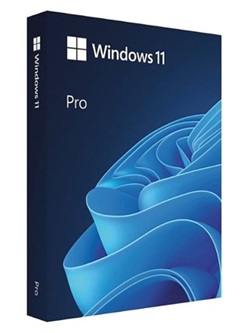Windows 11 23H2.3007 x64 Integral – 16in1 Edition 2024.1.11 en-US Torrent
Desktop and malware scan screenshots:
[———- EXCHANGE ———-]
(#) 2024.1.11 Changes:
* Added the latest updates for Windows 11 23H2 x64 13.12 (Dec).2023 – 9.1 (Jan).2024: KB5033920 (replaces KB5032007) | KB5034123 (Replaces KB5033375) | KB5034234 (replaces KB5031894).
* Updated Windows Malware Removal Tool (KB890830-v5) x64 “v5.119.23110.1001” from “v5.120.24010.1001”.
* Updated Microsoft Defender (KB2267602, KB4052623, KB5007651) x64 from “v1.403.445.0” to “v1.403.1926.0”.
* Updated Microsoft Edge (Chromium) x64 from “v120.0.2210.61” to “v120.0.2210.121”.
* Updated Microsoft Edge WebView2 Runtime x64 from “v120.0.2210.61” to “v120.0.2210.121”.
* Updated Office 365 Professional Plus x86/x64 online installer from “v3.2.3” to “v3.2.4”.
* Updated Mozilla Firefox x64 from version 120.0.1 to version 121.0.1.
\\!//
(o o)
——————————oOOo-(_)-oOOo————- – ——————-
Windows 11 23H2.3007 16in1 fi-US x64 – Integral Edition 2024.1.11
For bug reports and questions, visit
================================================= == == =========================
[———- CONTAINS ———-]
(#) Windows 11 hardware requirements override:
* This works for clean installs and upgrade scenarios.
1. Skip the Trusted Platform Module (TPM) check.
2. Bypasses the Secure Boot check.
3. Skips the minimum processor (CPU) check.
4. Skips checking for at least 8GB of RAM.
5. Bypasses the minimum 52GB storage check.
6. Allows installation on older BIOS/MBR systems.
7. Enables offline account via OOBE in all versions.
8. Disables the unsupported hardware watermark on the desktop.
* You will see the word “Server” instead of “11” in the update menu, this is normal. It’s part of bypassing hardware requirements.
* If you don’t have a product ID during the upgrade, use the generic product ID from the ISO/disk “.\sources\product.ini” file.
(#) Windows 11 Updates:
* All Windows 11 23H2 x64 updates are included in 9.1 (January) 2024:
1. KB890830-v5 – Windows Malware Removal Tool v5.120.24010.1001.
2. KB2267602 – Update for Microsoft Defender (KB4052623 & KB5007651), version 1.403.1926.0.
3. KB4559309 – Update for Microsoft Edge (Chromium) version 120.0.2210.61.
4. KB5019178 – Vulnerabilities in I/O memory mapping on some Intel processors.
5. KB5027397 – 23H2 Enablement Package feature update, version 2355.
6. KB5033204 – Out of the box experience update.
7. KB5033205 – Install dynamic update.
8. KB5033920 – Cumulative Update for .NET Framework 3.5 and 4.8.1.
9. KB5034123 – Cumulative Update for Windows 11.
10. KB5034234 – Secure Dynamic Operating System Update.
(#) Windows 11 runtime libraries:
* Microsoft Edge WebView2 v120.0.2210.121 x64.
* DirectX End-User Runtime v9.29.1974 (June 2010) x86/x64.
* Visual C++ Redistributable 2002 v7.0.9975.0 x86.
* Visual C++ Redistributable 2003 v7.10.6119.0 x86.
* Visual C++ Redistributable 2005 SP1 v8.0.50727.6229 x86/x64.
* Visual C++ Redistributable 2008 SP1 v9.0.30729.7523 x86/x64.
* Visual C++ Redistributable 2010 SP1 v10.40219.473 x86/x64.
* Visual C++ Redistributable 2012 Update 5 v11.0.61135.400 x86/x64.
* Visual C++ Redistributable 2013 Update 5 v12.0.40664.0 x86/x64.
* Visual C++ Redistributable 2015-2022 v14.38.33130.0 x86/x64.
* Visual Basic Runtime v1.00 x86.
* Visual Basic Runtime v2.0.9.8 x86.
* Visual Basic Runtime v3.0.5.38 x86.
* Visual Basic Runtime v4.0.29.24 x86.
* Visual Basic Runtime v5.2.82.44 x86.
* Visual Basic Runtime v6.1.98.39 x86 (update SP6 KB3096896).
* Visual Studio 2010 Tools for Office Runtime v10.0.60910.0 x86/x64.
(#) Windows 11 default settings:
* .NET Framework 3.5 = installed.
* Automatic installation of OneDrive = Disabled.
* Collection of diagnostic data = Disabled.




 41/21
41/21